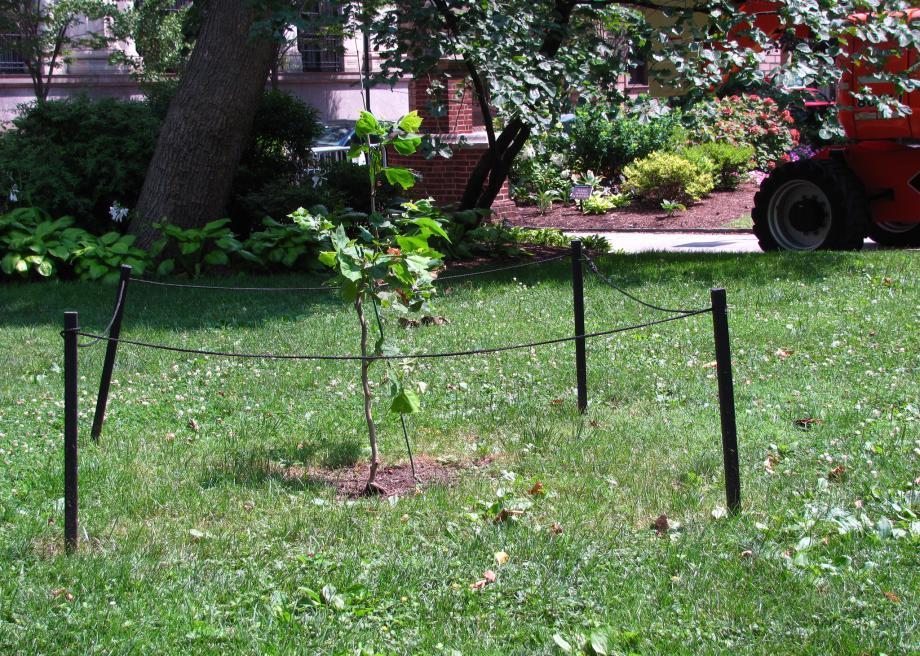Atlas Obscura on Slate is a blog about the world’s hidden wonders. Like us on Facebook and Tumblr, or follow us on Twitter.
Philadelphia’s Washington Square Park, a block south of the more famous Independence Hall and Liberty Bell, is mostly thought of as the home of the Tomb of the Unknown Revolutionary War Soldier. Few visitors realize that only a few yards away is the replanted clone of a Moon Tree.
In 1971 Astronaut Stuart Roosa was on the Apollo 14 Moon mission, but before being an astronaut he had served as a firefighter for the Forest Service. The Forest Service asked him to help in a little experiment—to bring tree seeds into space to see if they would germinate once back on Earth. Roosa was happy to oblige and brought hundreds of tree seeds, comprised of five varieties, on a ride to the Moon.
While in orbit, the capsule containing the seeds ruptured, but remarkably the seeds still popped when back in Forest Service hands. The seedlings were spread around the world, just in time to commemorate the 1976 bicentennial. They were called “Moon Trees,” and were sent off to everywhere from the White House to Texas, from Brazil to the Emperor of Japan.
It’s here in Washington Square Park that NASA and the US.. Forest Service planted the first of the Bicentennial Moon Trees. The little sycamore struggled to hold on, but didn’t make it for very long. In 2011 it was dead but soon replaced with another seedling—this time a clone from clippings of the original Moon Tree. (The Forest Service, on hand for the replanting ceremony, reported plans to recycle the old sycamore into signs and plaques that will remain in Washington Square Park.)
Space botany aside, the park itself has a long history, beginning in the early 18th century when it was everything from a cattle market and grazing site, to the city’s Potter’s Field (burial for paupers and the unknown), and cemetery for the city’s black population. Also buried here are victims of the Yellow Fever epidemic of the late 18th century.
Now, right in the old soil where so many known and unknown had been buried 200 years before, is the first of many space-faring saplings starting their earthly journey. The Forest Service doesn’t have a complete list of Moon Trees, but they are trying to track them all down—at least the ones that have survived. You can find out more about them here, here, and here. But that’s just a start; there are potentially hundreds of Moon Trees out there in this world.
Submitted by Atlas Obscura contributor grislydiscovery.
For more on Philadelphia’s Moon Tree, visit Atlas Obscura!
More wonders to explore:
- The buried remains of Little Compton Street in London can still be found hidden beneath a sewer grate.
- Bristol Basin: A small part of lower Manhattan is actually made from a bit of England.
- Captain America, Sub-Mariner, and the Human Torch were all born in this Art Deco masterpiece of a building in Manhattan.
